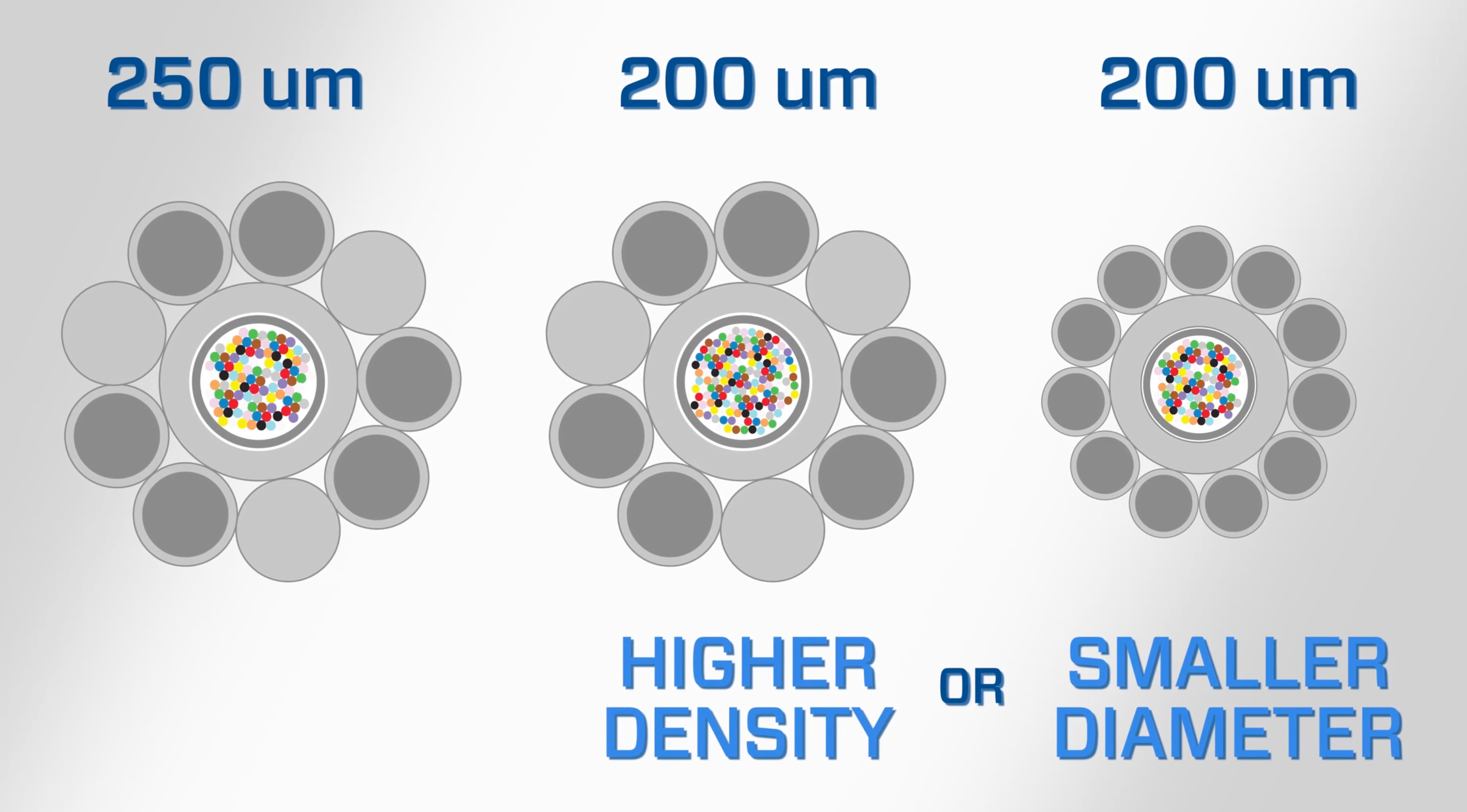


|
||
|
||

Fiber manufacturers are always trying to make it easier to deploy fiber. One of the most interesting trends is the increasing migration from 250-micron fiber to 200-micron fiber. For those not familiar with the metric system, a micron is one-thousands of a millimeter. A 250-micron fiber has a diameter of 0.25 millimeters, while a 200-micron fiber has a diameter of 0.2 millimeters.
That may not sound like a big difference, but when each fiber is thinner, the overall size of a fiber bundle is smaller. A larger fiber bundle of 200-micron fiber can be 20-30% smaller than the equivalent bundle of 250-micron fiber.
200-micron fiber has been around for five years, but it’s growing rapidly in popularity. It’s estimated that as much as 10% of all fiber sold is now 200-microns.
Interestingly, the core glass in the two types of fiber is identical, with a 9-micron core and a 125-micron surrounding glass. The difference in the overall fiber size is due to different coatings. The identical core means that it’s possible and easy to fuse a 200-micron fiber with a 250-micron fiber—allowing a fiber builder to mix the two kinds of fiber in a network.
There are big benefits to using smaller fiber. The smaller size means smaller fiber bundles that are far easier to use during the construction process. There is the added benefit of getting a lot more of the thinner fiber on a reel, meaning fewer changes of reels.
One of the more interesting benefits is to use a bendable version of the thinner fiber (Bending Inflexible Fiber). Bendable fiber is more tolerant of bending during the construction process, leading to less damage and stress on the fiber. Thinner fibers make it easier to install indoor fiber in places with a lot of 90-degree bends.
Perhaps the ultimate benefit is that smaller diameter fiber makes it easier to use microduct conduits. If using 200-micron fiber, it’s possible to fit a 432 fiber into a 10-millimeter microduct or an 864 fiber bundle into a 14-millimeter microduct. This opens up the possibility of installing huge numbers of fiber along a street in those situations where it’s needed.
Sponsored byWhoisXML API

Sponsored byIPv4.Global

Sponsored byVerisign

Sponsored byVerisign

Sponsored byDNIB.com

Sponsored byCSC

Sponsored byRadix
